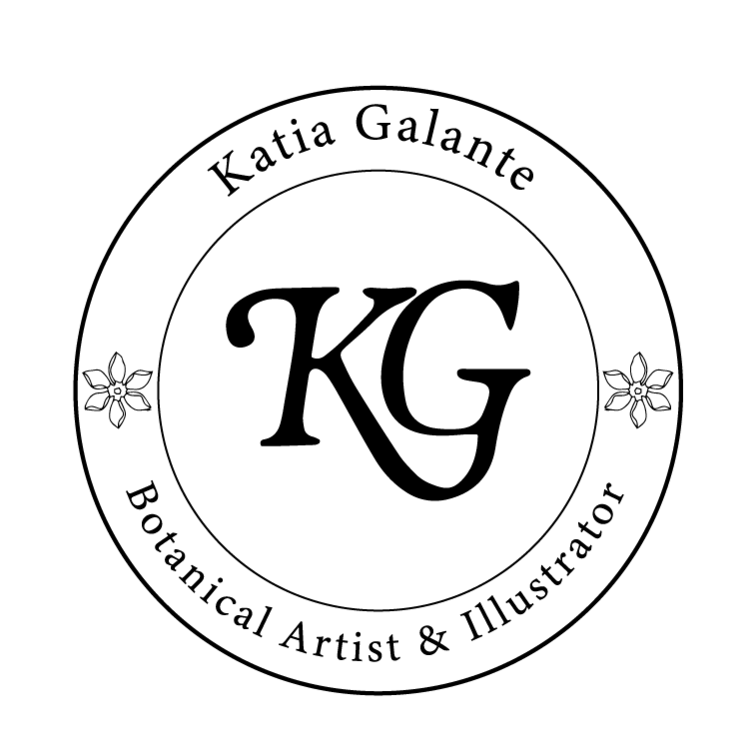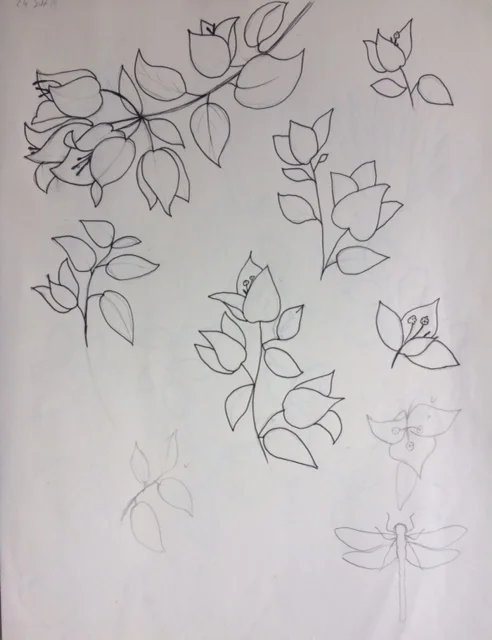Hello, hello my creative friends!
As I mentioned in my first post, I’d like to take you with me on the journey to becoming (hopefully) a successful surface pattern designer, and I think the best way to start is by sketching.
I know many people say you don’t actually need to know how to draw to design patterns, and indeed many people only use vector art (created digitally) for their designs and there is absolutely nothing wrong with that.
However, I do think that learning how to draw will greatly help you in your designs; and I don’t mean becoming as good as Leonardo 😊 but if you can draw your own motifs for your designs, it makes it so much more satisfying at the end when you have produced a pattern with your own, unique, hand drawn motifs.
Please don’t think that you can’t draw and you’ll never be able to! I can assure you drawing is not a divine gift bestowed on a few, selected, lucky, souls. You CAN learn how to draw, it just takes practice, and the willingness to do it. Yes, nothing comes for free in life, if you want something really badly you’ll have to work for it, but in the end it’s soooo worth it!
So I’d advise you to get yourself a sketchbook and a pencil and start a daily sketchbook practice.
Now if you are still reading this blog it means that you’re just starting out with sketching, or maybe you haven’t even started yet, so you might have some concerns about which sketchbook to get and what paper is best and what pencils, etc.
I have tried so many different sketchbooks in my artistic life I have lost count! The truth is, it mostly comes down to how you want to use it. Do you want to start just with pencil sketches? Do you want to add colour? If so, what type of colour? Dry (coloured pencils or other crayons) or wet (watercolour, gouache, acrylic, etc.)?
I know it might seem confusing but if you’re just starting out the best option is probably to just use the good old pencil. In that case a 2B pencil will do! You don’t really need the whole set from 2H all the way to 8B unless you really want to play with all the different strokes and possibilities that these pencils give you. Below is an exercise I did while studying for the Certificate in botanical illustration course with the Edinburgh Botanical Gardens; it shows some of the B, HB and F pencils from three different brands. There is a small difference from brand to brand but again you have to try them out to see which one you like best.
As for the practice itself, try to put aside at least 15-20 minutes a day (more is even better if you can) and start sketching any subject you like. It doesn’t have to be perfect and at the beginning it probably won’t be, but it doesn’t matter, your sketchbook is for your eyes only (unless you want to show it to others), consider it as a visual secret diary.
Make sure you write the date on the page so in a few months’ time you can go back and see the progress you’ve made.
I have decided to be brave and share a couple of pages from my sketchbook (below). The first one is from 28th March 19 and the second one is from 24th June 19. My sketches are still far from perfect but I can see the difference.
For my everyday sketching I use a Moleskine Cahier Journal, Extra Large 19 x 25 cm, 120 Pages; it comes in a set of 3 and you can purchase it on Amazon. The pages are not very thick, I think it’s only about 70gsm, but for pencil sketch is fine and it’s a good size, at least for me 😊
I hope I have inspired you to pick up that pencil and start sketching and, if that is something that makes you happy, please do it. Find the time, MAKE the time to do it!
Till next time
Create and be happy xox



